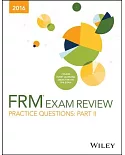India’s cities have dramatically changed since the country’s liberalization in the 1990s. Alongside open-air markets and crumbling apartment blocks, spacious air-conditioned malls now sell
Louis Vuitton luggage and Swarovski crystal, new gated communities offer residents pools and indoor gyms, and towering office buildings house international firms. Landscapes of Accumulation
is about this violent, sudden, and spectacular urban transformation. Anthropologist Llerena Searle gives an ethnographic account of how land is becoming an international financial resource
rather than a site for agricultural or industrial production. Investors, consultants, and government officials are creating a system of clear land titles, well developed and securitized
mortgage markets, and practices for financing, constructing, leasing, and maintaining buildings. But Searle shows that there is also considerable semiotic work involved. Drawing on fieldwork
with investors, developers, real estate agents and others, she documents how stories about growth?the growth of consumer demand, the Indian workforce, the Indian Gross Domestic Product,
incomes, foreign investments, and real estate itself?become self-fulfilling prophecies. These imaginative statements, rather than specific state and city mandates, are shaping India’s built
environment, which has become increasingly difficult to navigate for all but a tiny urban elite. This book will be essential reading for anyone interested in the consequences of turning land
into an international financial engine and, more broadly, the material ramifications of late capitalism’s global reach.





















